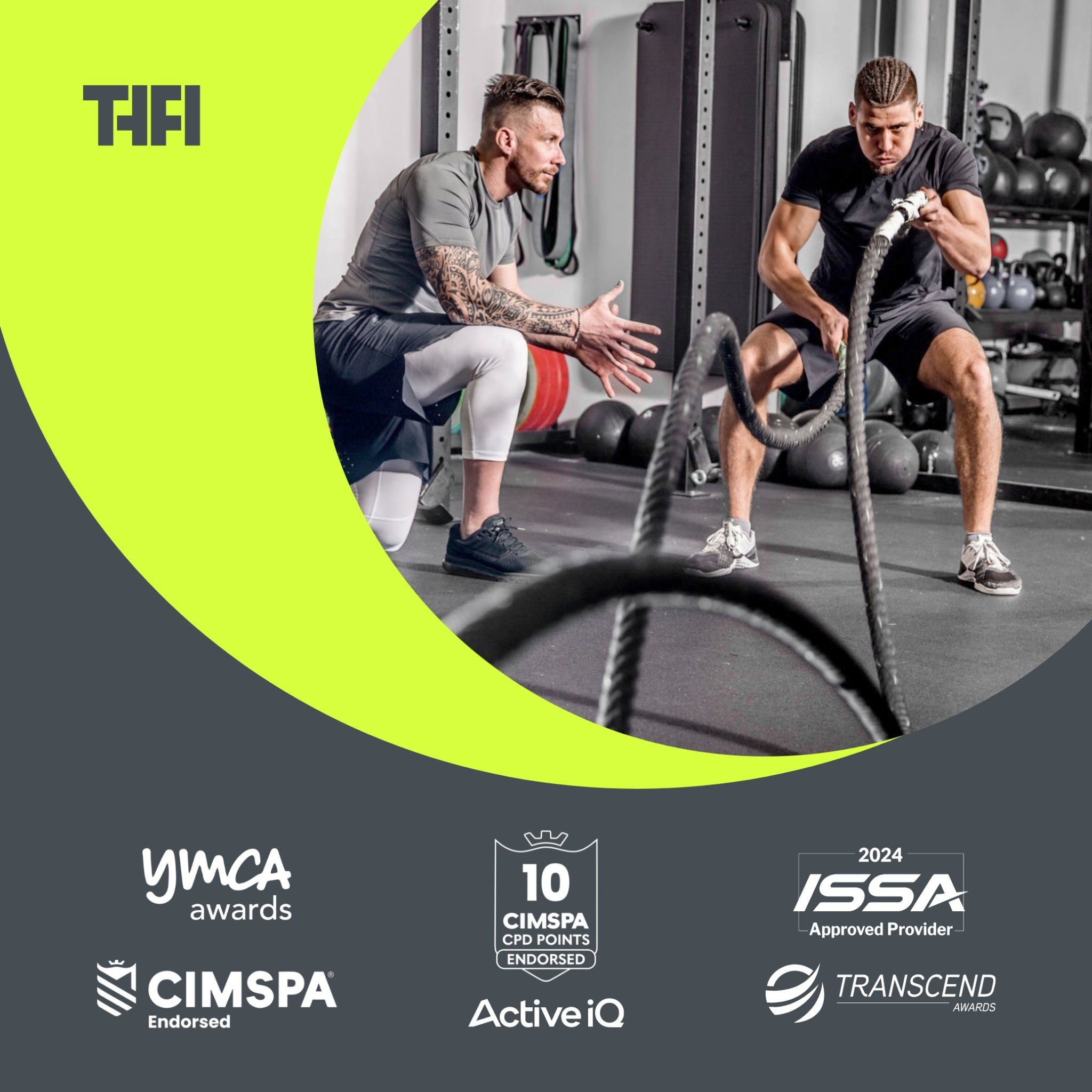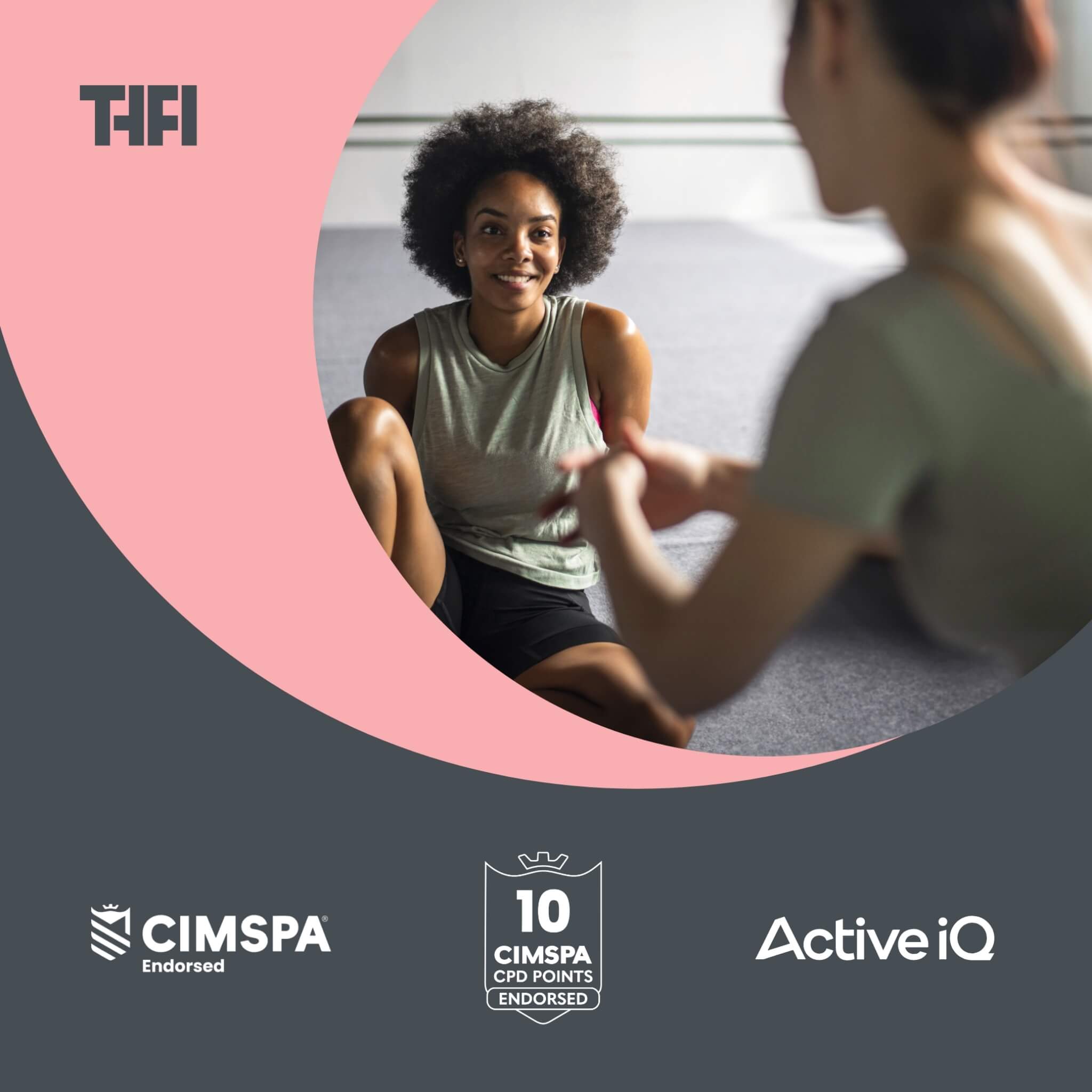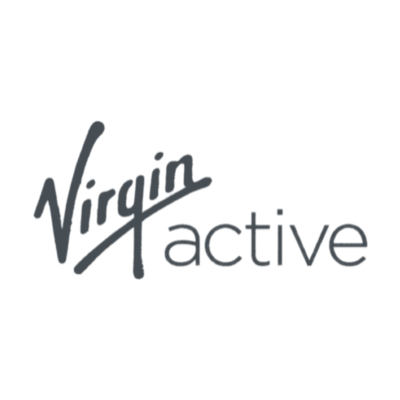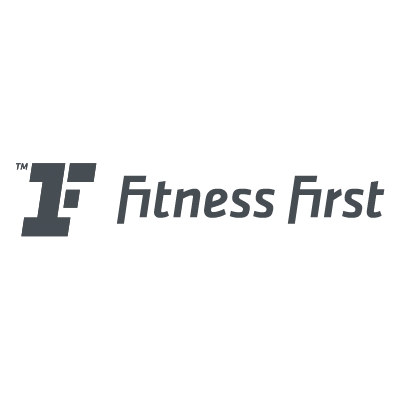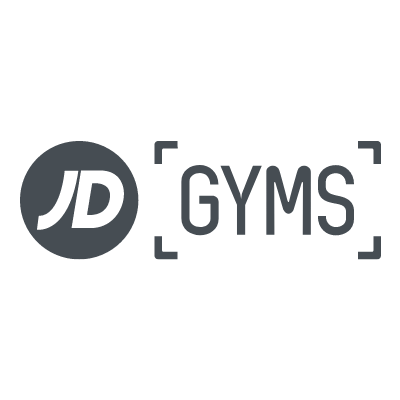5 Mistakes All New Personal Trainers Make

Are You Making These Common Mistakes as a New Personal Trainer?
When you first start out as a personal trainer working in the gym with real-life clients it can feel both exciting and overwhelming.
You’ve got the knowledge, the passion, and the drive to make a difference in your clients’ lives.
But even though you’re fully qualified, there’s so much you still don’t know about the job, working with people, and running a business.
It’s easy to focus too heavily on the gym part of being a PT, but neglecting other key areas of the job is a pitfall so many new trainers fall into – often without even realising it.
This article explores the five biggest mistakes fitness professionals make in their make-or-break first year on the job.
From failing to build personal relationships and ignoring the ‘business’ side of PT to overcomplicating workout programs and neglecting your education and personal development.
We show you how these five mistakes can hobble your novice career, and give you actionable strategies to get yourself on the right path to success...
1. Neglecting to build personal relationships
The importance of connection
When you become a personal trainer, it’s easy to think all you need to do is focus on crafting workouts, putting clients through sweat-dripping sessions, and understanding the latest diet trends.
But the real foundation of your success lies in your ability to connect with your clients on a personal level and build strong relationships.
It's easy to get caught up in the technicalities of training, but neglecting the human element can be a costly mistake for any new PT.
Why relationships matter
Strong client relationships are the bedrock of a thriving personal training business.
Your clients aren’t just looking for someone to count reps and set up exercises. They’re seeking guidance, expertise, motivation, and a sense of partnership in their fitness journey.
When you take the time to understand their goals, listen to their concerns, and celebrate their successes, you’re doing more than just training them – you’re building a relationship.
And forging relationships of trust and partnership will lead to higher retention rates and a steady stream of referrals.
Word-of-mouth is still one of the most powerful marketing tools in the fitness industry. Clients who feel connected to you are more likely to recommend your services to friends, family, and colleagues. This organic growth can be far more effective – and cost-efficient – than any advertising campaign. In other words, the stronger your relationships, the stronger your business.
How to fix it
So, how do you ensure that you’re building these crucial connections? It starts with active listening. Too often, trainers can fall into the trap of thinking they know what’s best for their clients without really understanding their unique needs and motivations. Active listening involves more than just hearing what your clients say; it’s about truly engaging with them, asking questions, and demonstrating that you value their input.
One practical approach is to begin each session with a brief conversation about how they’re feeling – both physically and mentally. This isn’t just about gathering information; it’s about showing empathy and genuine interest in their wellbeing. By understanding their current state, you can tailor your approach to meet them where they are, rather than where you think they should be.
Another key element is setting clear, collaborative goals. Instead of imposing a set of objectives on your clients, involve them in the goal-setting process. Ask them what they want to achieve, why those goals matter to them, and how they envision their progress. This collaborative approach not only empowers your clients but also makes them feel more invested in their training programme.
Finally, foster a supportive environment where your clients feel comfortable sharing their struggles and triumphs. Celebrate their wins – no matter how small – and provide constructive feedback when things don’t go as planned. Remember, your role is not just to push them physically but to support them emotionally as well. By creating a positive, encouraging atmosphere, you’ll help your clients build confidence and trust, both in you and in their own abilities.
2. Overcomplicating training programmes
Keeping it simple and effective
When you’re fresh out of training as a PT and eager to impress, it’s easy to fall into the trap of overcomplicating your clients’ programmes. You’ve spent months learning about different fitness protocols and training techniques, so naturally, you want to showcase that knowledge. However, in your enthusiasm to prove yourself, you might inadvertently make things more complicated than they need to be, which can actually hinder your clients’ progress.
The complexity trap
As a new trainer, you might feel the pressure to differentiate yourself from the competition by offering something unique or innovative. This often leads to creating programmes packed with complex exercises, multiple training modalities, and intricate periodisation schemes. While these elements can have their place, overloading or overcomplicating a programme can overwhelm clients. Especially if they are just finding their feet in the gym or getting back to fitness after a long hiatus.
Overcomplication doesn’t just confuse clients; it can also reduce their confidence and motivation. If a client struggles to understand or perform the exercises you prescribe, they may start to doubt their abilities – or worse, your competence as a trainer. Remember, the goal is not to impress with complexity but to deliver results. And more often than not, simplicity is key to achieving those results.
The truth is, some of the most effective training programmes are also the simplest. Take, for example, the principles of progressive overload and compound movements. These tried-and-true methods have been delivering results for decades, and they’re backed by substantial research. Instead of trying to reinvent the wheel, focus on mastering these fundamentals and adapting them to suit each client’s needs.
How to fix it
The solution is straightforward: simplify your approach. Do the basics, and do them well. Start by focusing on fundamental exercises that target multiple muscle groups, such as squats, deadlifts, push-ups, and rows. These compound movements are the cornerstone of any effective training programme, offering the most bang for your buck in terms of strength, mobility, and overall fitness.
When designing a programme, think about the client’s experience level, goals, and lifestyle. A beginner doesn’t need a five-day split with advanced periodisation; they need a basic, full-body routine that they can perform consistently.
For more experienced clients, you can gradually introduce complexity, but even then, the focus should remain on exercises and routines that are manageable and sustainable.
It’s also crucial to maintain flexibility in your programming. Each client is different, and what works well for one person might not be suitable for another. Be prepared to adjust exercises, sets, reps, and intensity based on how your client responds. This adaptability not only improves results but also shows your clients that you’re attentive to their individual needs.
Lastly, communicate the ‘why’ behind your programme choices. Explain to your clients why you’re focusing on certain exercises or why you’re keeping things simple. When clients understand the rationale, they’re more likely to trust the process and stay committed. Plus, it reinforces the idea that effective training doesn’t need to be complicated – it just needs to be consistent and purposeful.
3. Underestimating the ‘business side’ of personal training
Beyond the gym
Many new personal trainers enter the industry with a passion for fitness and helping others achieve their goals. While these are commendable motivations, they’re only part of the equation for a successful career. The harsh reality is that being an exceptional trainer isn’t enough if you don’t understand the business side of the industry. Without a firm grasp on marketing, sales, and client management, even the most knowledgeable and skilled trainers can struggle to make a decent living.
The business reality
The fitness industry is competitive, and simply being good at what you do doesn’t guarantee success. Understanding the business aspects of personal training is crucial for long-term sustainability and growth. This includes everything from attracting and retaining clients to managing your finances and scaling your services.
Marketing is often an afterthought for new trainers, but it’s essential for building a client base. You could be the best trainer in your area, but if no one knows who you are, you won’t have any clients. Effective marketing helps you stand out in a crowded market, connect with potential clients, and communicate the value you offer.
Sales skills are equally important. Many trainers shy away from selling because it feels uncomfortable or pushy. However, selling is simply about helping people see how your services can meet their needs. If you can’t sell your services, you can’t build a sustainable business.
Client management is another critical area. This goes beyond just scheduling sessions; it involves building long-term relationships, tracking progress, and maintaining client satisfaction. Poor client management can lead to high turnover rates, which can be detrimental to your business.
How to fix it
Improving your business acumen doesn’t happen overnight, but with the right approach, you can gradually build the skills needed to succeed. Here are some actionable steps to get started:
- Commit to continuous learning: The business side of personal training is just as important as the technical side, so make sure you’re dedicating time to learning about it. This could involve taking courses in marketing, sales, or business management, reading relevant books, or following industry experts who share valuable insights such as Ultimate Performance founder Nick Mitchell, Phil Learney or Mark Coles. There are plenty of online resources and webinars tailored specifically for personal trainers looking to boost their business knowledge. But beware the ‘PT business gurus’ selling courses or sales systems with very little track record or results to back them up. This is the sole reason THFI developed its Business Accelerator Course, and offers 12 months of mentoring after qualifying.
- Set up a solid pricing structure: One of the most common mistakes new trainers make is undervaluing their services. It’s tempting to offer low rates to attract clients, but this can devalue your expertise and make it difficult to raise prices later on. Research the market rates in your area, consider your target clientele, and set your prices accordingly. Make sure your pricing reflects the value you provide, and don’t be afraid to charge what you’re worth.
- Leverage social media: Social media is a powerful tool for personal trainers. It allows you to showcase your expertise, connect with potential clients, and build your brand in a real and direct way with people. Focus on creating content that provides value – whether that’s workout tips, client success stories, or insights into your training philosophy. Be yourself, show what you do, and what you believe...and you’ll attract your audience.
- Develop a client management system: This is about more than simply keeping track of appointments. Invest in software or systems that help you manage client information, track progress, and maintain regular communication. This not only enhances the client experience but also frees up your time to focus on the big things – like training clients, getting results, and growing your business.
- Practice selling with integrity: Reframe your mindset around sales. Instead of viewing it as a necessary evil, see it as an opportunity to help people. Focus on understanding potential clients’ needs and demonstrating how your services can meet those needs. Develop a clear, honest sales process that aligns with your values, and practice it until it feels natural.
4. Inadequate self-marketing and branding
Standing out in a crowded market
Everywhere you look online there are personal trainers, coaches, and fitness influencers all vying for the attention of potential clients. In such a competitive landscape, simply being knowledgeable and skilled isn’t enough to make it. One of the most common mistakes new personal trainers make is failing to adequately market themselves and build a distinct brand. Without a clear and compelling brand identity, it’s easy to blend into the background, making it difficult for potential clients to see what sets you apart from the rest.
The branding mistakeMany new trainers enter the industry with a ‘one-size-fits-all’ approach, believing that by appealing to everyone, they’ll attract more clients. Unfortunately, this often results in a generic image that doesn’t resonate with anyone in particular. Without a strong personal brand, you’re just another faceless PT in a sea of trainers, making it harder to attract the kind of clients who are truly aligned with your approach and expertise.
Branding isn’t just about having a logo or a catchy slogan; it’s about creating a clear, consistent message that communicates who you are, what you stand for, and how you can help your clients achieve their goals. Your brand is your identity in the market – it’s what people will think of when they hear your name. If you don’t define your brand, others will do it for you, and you might not like the results.
How to fix it
To avoid the branding mistake, you need to be intentional about developing your personal brand and marketing it effectively. Here’s how you can start:
- Define your unique selling proposition (USP): Your USP is what makes you different from every other trainer out there. It’s the specific value you bring to the table. To identify your USP, think about your strengths, your passions, and the type of clients you want to work with. Are you particularly good at helping beginners? Do you specialise in strength training for women? Perhaps you have a background in rehabilitation or nutrition that enhances your training services. Whatever it is, make sure it’s clear and central to your branding.
- Create a niche: Trying to appeal to everyone can dilute your brand. Instead, focus on a specific niche where you can establish yourself as an expert. Whether it’s weight loss for busy professionals, functional training for seniors, or sports performance for young athletes, choosing a niche allows you to target a particular audience with precision. This not only helps you stand out but also makes your marketing efforts more effective, as you can tailor your messaging to resonate with your ideal clients.
- Develop a consistent brand identity: Your brand identity includes your logo, colour scheme, fonts, and the tone of your messaging. But it goes deeper than aesthetics – it’s about how you communicate your values and connect with your audience. Consistency is key. Make sure that every piece of content you produce, from social media posts to client communications, reflects your brand’s personality and values. This creates a cohesive experience for your clients and reinforces your brand in their minds.
- Tell your story: People connect with stories, so don’t be afraid to share yours. Whether it’s your journey into fitness, the challenges you’ve overcome, or the success stories of your clients, storytelling can humanise your brand and make it more relatable. Use your story to highlight your values, your passion for helping others, and the unique perspective you bring to personal training.
5. Ignoring continuing education
The need for ongoing learning
Fitness never stands still. The industry is dynamic, with new research, techniques, and trends emerging on a regular basis. While your initial training and certifications will give you a strong foundation, they are just the beginning of your educational journey as a personal trainer. Ignoring the importance of continuing education is a common mistake that can hinder your growth and impact your success in the industry.
Stagnation risk
When you stop learning, you risk stagnating – not only in your knowledge and skills but also in the results you can offer your clients. The fitness industry is constantly evolving, with advancements in exercise science, nutrition, rehabilitation, and technology. Clients today are more informed and have higher expectations, often looking to trainers for the latest and most effective methods to achieve their goals.
If you fail to stay current with industry trends and innovations, you risk being left behind. Clients will quickly move onto the ‘next thing’, or seek out a new trainer that can address their needs or support their goals more effectively.
It’s not just fitness that’s evolving...your competitors are evolving too. To stay ahead, you can’t stand still...and you need to offer more than just the basics or the ‘same old stuff’.
Continuing education allows you to expand your skill set, specialise in areas of interest, and provide added value to your clients. Whether it's mastering new training techniques, understanding advanced nutrition strategies, or learning how to use the latest fitness technology, ongoing learning helps you remain relevant and competitive.
How to fix it
The solution to avoiding stagnation is to make continuous professional development a priority. Here’s how you can keep your knowledge and skills up to date:
- Pursue additional certifications: There are numerous advanced certifications available that allow you to specialise in specific areas of fitness, such as strength and conditioning, pre- and post- natal exercise, or nutrition coaching. These certifications not only deepen your expertise but also make you more attractive to potential clients looking for specialised services. Research accredited organisations like The Health and Fitness Institute that offer certifications recognised within the industry and choose those that align with your career goals.
- Attend workshops and seminars: Workshops, seminars, and conferences provide opportunities to learn from industry experts, gain hands-on experience, and stay informed about what’s new in fitness. They also offer valuable networking opportunities, allowing you to connect with other professionals and share insights. Make it a point to attend at least one major industry event each year, and look for local workshops that can enhance your skills in specific areas.
- Stay updated with the latest research: The field of exercise science is continuously evolving, and staying informed about the latest research is crucial. Subscribe to industry journals, follow reputable fitness blogs, and join professional associations that provide access to current studies and articles. By integrating the latest research into your practice, you can ensure that your training methods are evidence-based and aligned with current best practices.
- Engage in online learning: The rise of online education has made it easier than ever to continue your education. Many organisations offer online courses, webinars, and certifications that you can complete at your own pace. This flexibility allows you to learn new skills and stay updated without disrupting your work schedule. Look for courses that offer practical, actionable content that you can immediately apply to your training practice.
Conclusion
Every new personal trainer, no matter how talented or dedicated, will encounter mistakes, particularly in the early stages of their career. These mistakes are a natural part of the learning process. However, what separates successful trainers from the rest is their ability to recognise these pitfalls and take proactive steps to address them. By focusing on building strong personal relationships with your clients, simplifying your training programmes, understanding the business aspects of personal training, and committing to continuous education, you can lay a solid foundation for a thriving and sustainable career.
Remember, each mistake you encounter is not a setback but an opportunity for growth and improvement. The path to success in the fitness industry isn’t about perfection – it’s about progress. By actively working on these key areas, you’re not just avoiding common errors; you’re equipping yourself with the tools and mindset needed for long-term success.







